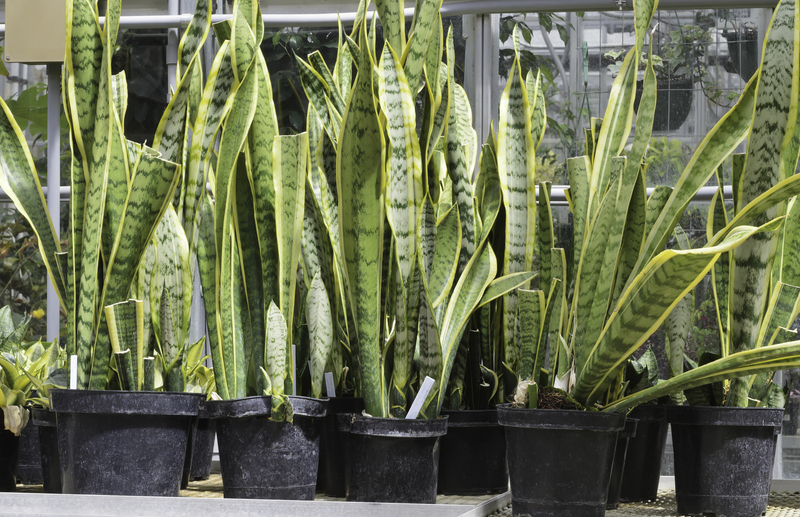Starting Fresh: Key Steps to Revive Your Neglected Garden
Posted on 29/06/2025
Starting Fresh: Key Steps to Revive Your Neglected Garden
Is your backyard overrun with weeds, wilted flowers, and memories of lush greenery long gone? You're not alone. Many homeowners let their gardens slip amidst busy schedules - but the good news is, reviving a neglected garden is wholly achievable. With patience, smart planning, and some elbow grease, you can transform your untended yard into a thriving sanctuary.
This comprehensive guide to starting fresh in the garden will walk you through every essential step to reclaim, redesign, and rebuild your outdoor space, helping you reconnect with nature while boosting your home's curb appeal.

Why Reviving Your Neglected Garden Matters
A beautiful garden is more than just visual appeal. It invites pollinators, offers relaxation, and can even benefit your mental health. If left unattended, however, the space may not only lose its charm but could also become a haven for pests or invasive plants.
- Supports biodiversity: Healthy gardens welcome bees, butterflies, and birds, supporting local ecosystems.
- Enhances property value: A well-maintained garden can significantly improve your home's marketability.
- Boosts well-being: Gardening has proven mental and physical health benefits, from reducing anxiety to providing exercise.
Step 1: Assess the Situation
Before diving in, take a long look at your neglected garden. Put on sturdy gloves, grab a notebook, and walk the space. Ask yourself:
- What's salvageable? Are there perennials or shrubs worth saving?
- Are there problem areas? Identify zones overtaken by weeds, pests, or disease.
- Consider sun and shade patterns: Is the area mostly sunny, partly shady, or shrouded by trees?
Jot down your garden's strengths and weaknesses. Taking photos helps track improvements and plan future layouts.
Tip:
Don't get discouraged! Every wild corner is a blank canvas for your creativity.
Step 2: Clean Up and Clear Out
Restoring your abandoned garden starts with a thorough clean-up. Here's how to reclaim your overgrown plot:
- Remove debris: Pick up fallen branches, litter, and any garden tools left behind. Dispose of broken pots and dead plants.
- Cut back: Prune overgrown hedges, trees, and shrubs. Remove any damaged or sickly branches to allow for healthy regrowth.
- Purge the weeds: Tackle weeds methodically, ensuring you pull up roots to prevent regrowth. For heavily infested areas, a hoe or weed puller can help.
- Clear out unwanted plants: Reckless volunteer plants or invasives should be pulled and disposed of immediately.
Disposal Tip:
Compost healthy plant material. Trash any diseased or pest-infested foliage to avoid spreading issues further.
Step 3: Restore Soil Health
Rich, healthy soil is the foundation of every thriving garden. Years of neglect can leave the earth compacted, depleted, or imbalanced.
- Test your soil: Use a DIY soil test kit or send samples to a lab to check pH, nutrient levels, and texture.
- Aerate and loosen: Break up compacted soil with a garden fork. For clay-heavy yards, add organic matter to improve drainage.
- Add organic amendments: Incorporate compost, aged manure, leaf mulch, or worm castings based on your soil test results.
- Correct the pH: If needed, add lime to raise pH or sulfur to lower it, aiming for the ideal range for most garden plants (6.0-7.0).
Revitalizing your garden's soil may take a few weeks, but it's a crucial investment in the long-term health and productivity of your plants.
Quick Soil Recipe:
- One part compost
- One part peat moss or coconut coir
- One part coarse sand or perlite
Step 4: Design Your New Garden Plan
With a cleared plot and improved soil, consider your goals and redesign your garden layout. This is your opportunity to set a vision for the future!
Considerations for Your Garden Makeover:
- Purpose: Are you growing vegetables, cut flowers, or a peaceful retreat?
- Maintenance level: Choose between low-maintenance perennials or vibrant annuals depending on your schedule.
- Structure: Add raised beds, decorative pathways, or defined borders.
- Native plantings: Use region-appropriate plants to encourage pollinators and reduce water and fertilizer needs.
- Companion planting: Arrange herbs, flowers, and veggies to naturally deter pests and boost productivity.
Sketch out your ideas on paper or use online design tools. Group plants with similar water and sunlight needs, and plan for succession planting to keep your garden productive year-round.
Step 5: Choose the Right Plants
Selecting plants suited to your climate, soil, and vision is essential for successful garden revival. Take into account:
- Sun exposure: Place sun-lovers in open areas; shade-friendly plants under trees or buildings.
- Soil conditions: Acidic, sandy, or loamy soil affects what will thrive.
- Water availability: Opt for drought-resistant species if rainfall is limited.
- Pest and disease resistance: Look for varieties bred to withstand local challenges.
Best Choices for Reviving Neglected Spaces
- Hardy perennials: Coneflower, daylilies, and black-eyed Susans bounce back easily.
- Groundcovers: Creeping thyme or ajuga help choke out weeds and fill empty ground quickly.
- Native grasses and wildflowers: These boost biodiversity and require minimal attention.
- Vegetables and herbs: Start with easy crops like radishes, lettuce, or mint.
Before purchasing, check for locally adapted plants at nearby nurseries for the best results.
Step 6: Plant, Water, and Mulch
Now, bring your revived garden to life! Follow these tips for strong, stress-free planting:
- Plant at the right time: Early spring or fall are ideal for most regions. Avoid planting during heatwaves or drought unless irrigated.
- Prep the soil: Work in last-minute amendments and remove any new weeds.
- Set plants at correct depth: Don't bury stems too deeply. Gently loosen root balls if planting from pots.
- Water deeply: Give new plants a thorough soak to establish roots.
Mulching with bark, straw, or leaves helps retain moisture, smother weeds, and regulate soil temperature. Apply a 2-3 inch layer around - but not touching - the base of your plants.
Pro Tip:
Mark newly sown areas with labeled stakes so you remember what's planted and where!
Step 7: Regular Care for Continuous Success
A revived garden still thrives on consistent attention. Set aside time each week to:
- Water as needed: Early morning is best. Adjust frequency by weather and plant type.
- Weed regularly: Prevent invasives from returning, especially after rainfall.
- Prune and deadhead: Trim spent blooms and foliage to promote new growth.
- Fertilize lightly: If using compost, extra feeding may be minimal. Use organic solutions whenever possible.
- Monitor for pests and disease: Regularly inspect leaves, stems, and soil for problems. Treat early to contain outbreaks.
Establish a simple garden calendar and maintenance checklist. Consistency ensures your hard work pays off for years to come.
Common Challenges in Restoring Neglected Gardens
Even the most determined gardener may face setbacks when starting over with a forgotten landscape. Here are solutions to frequent issues:
- Rampant weeds: Solarize infested beds by covering with clear plastic for 6-8 weeks to kill weed seeds.
- Pest infestations: Attract beneficial insects naturally with companion flowers or install bird feeders.
- Poor drainage: Build raised beds or install French drains to avert waterlogged soil.
- Stubborn shade: Opt for shade-tolerant hostas, ferns, or woodland wildflowers.
- Lack of time: Start small and expand as you gain confidence and establish routines.
Eco-Friendly Tips for a Sustainable Revival
When restoring your garden from neglect, make earth-friendly choices:
- Compost yard waste: Reduce landfill and enrich soil simultaneously.
- Mulch with organics: Reuse leaves, grass clippings, or shredded bark for free, eco-wise ground cover.
- Harvest rainwater: Use barrels or soaker hoses to conserve municipal supplies.
- Plant pollinator patches: Sunflowers, lavender, and salvia attract vital insects and support food webs.
- Avoid chemicals: Opt for integrated pest management and organic fertilizers to protect children, pets, and wildlife.
Fact:
A thriving, restored garden acts as a mini-refuge for urban and suburban wildlife. Your efforts support butterflies, bees, and birds!

Celebrating Your Garden Revival
Rejuvenating a neglected garden is both a challenge and a profound joy. By following these key steps to garden revival, you'll soon witness the return of color, life, and vibrancy. Take "before and after" photos to track your progress and share your journey with friends or online gardening communities for added motivation.
- Host a garden reopening party - Invite neighbors or loved ones to enjoy your transforming space.
- Keep a garden journal - Logging your plant successes, weather patterns, and observations will inform next year's plans.
- Enjoy the process - Gardening is a journey, not a race. Celebrate each resilience and bloom along the way.
Conclusion: Your Fresh Start Awaits
Whether you're bringing back a long-lost vegetable patch or reviving overgrown flower beds, starting fresh in your garden promises tangible rewards for mind, body, and community. By assessing, cleaning up, rejuvenating the soil, planning, planting, and maintaining thoughtfully, your once-neglected oasis will become a source of pride and pleasure for years to come.
Start your garden revival today. Embrace the process, enjoy the journey, and welcome the lush life back to your outdoor haven!

